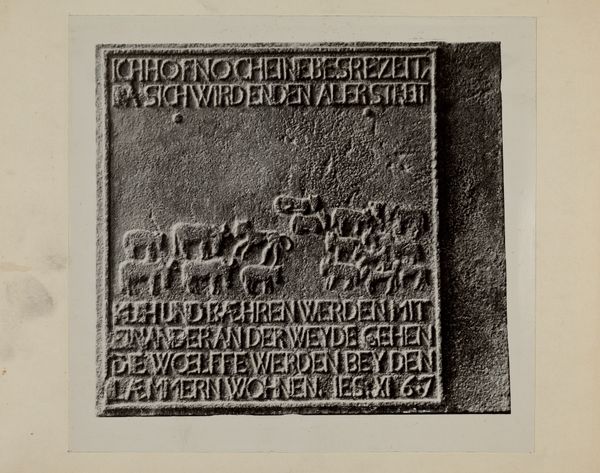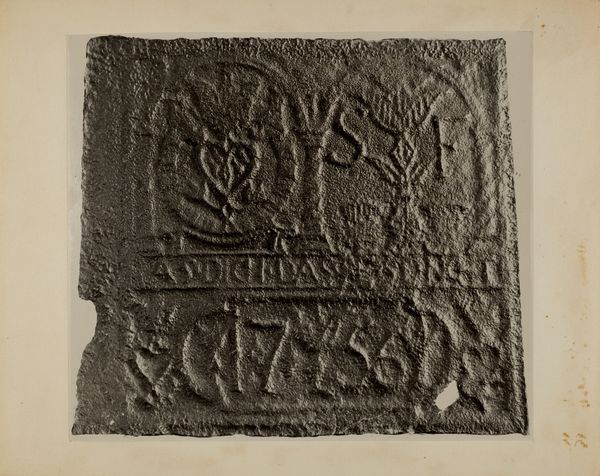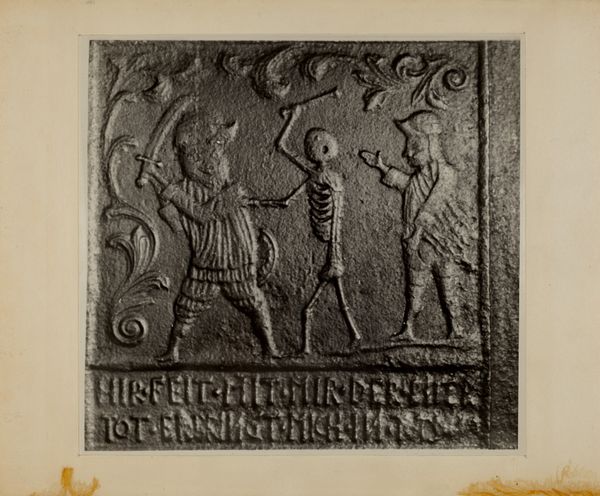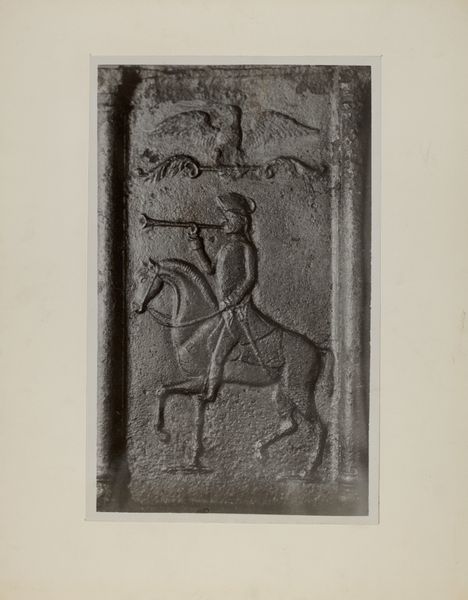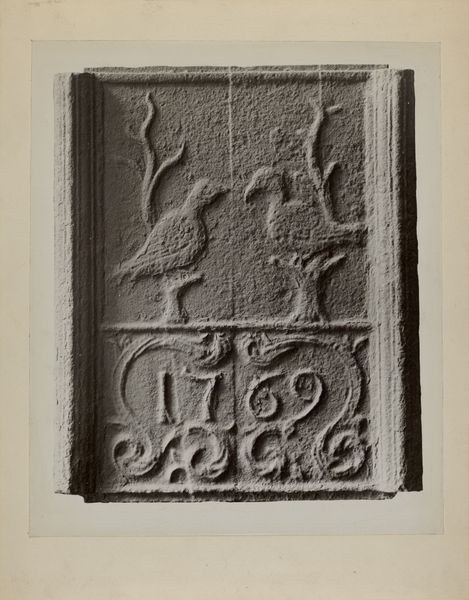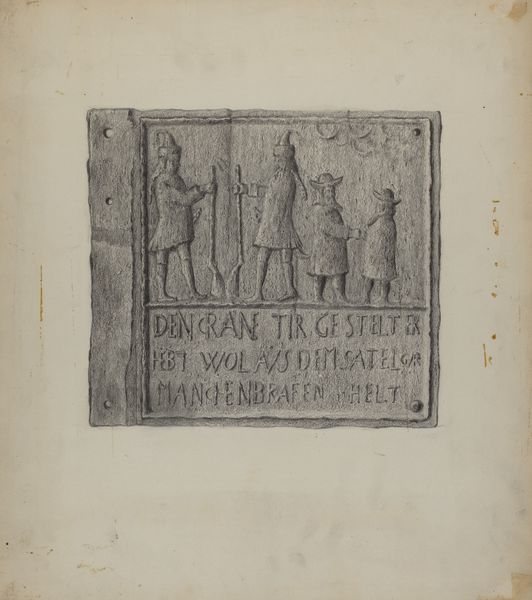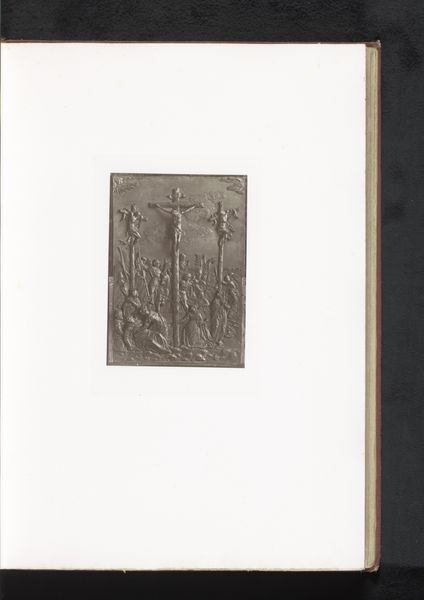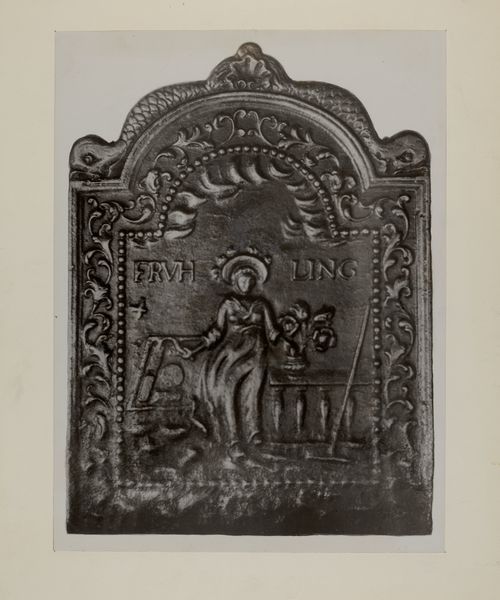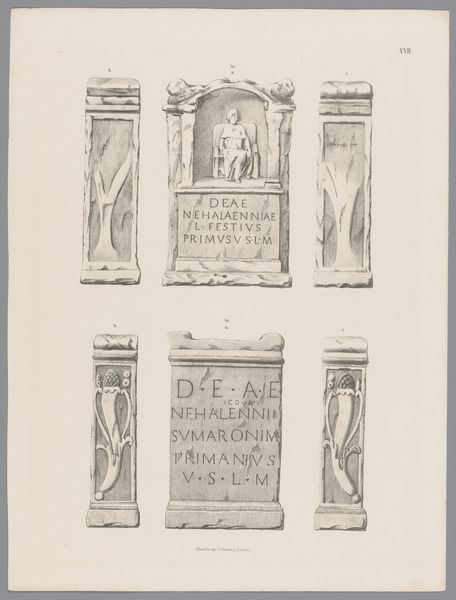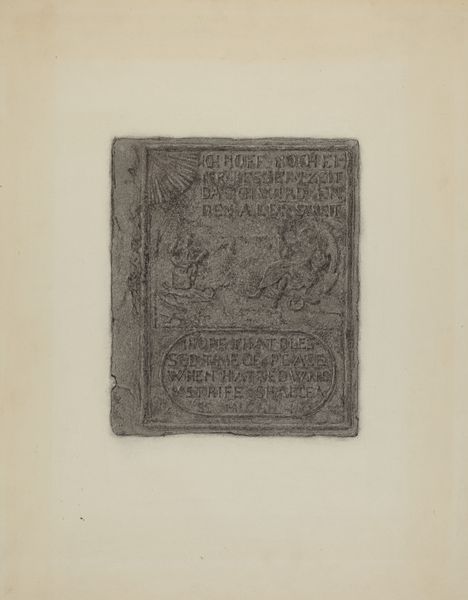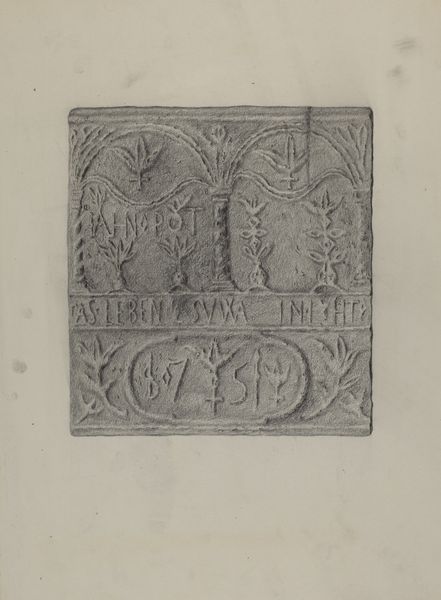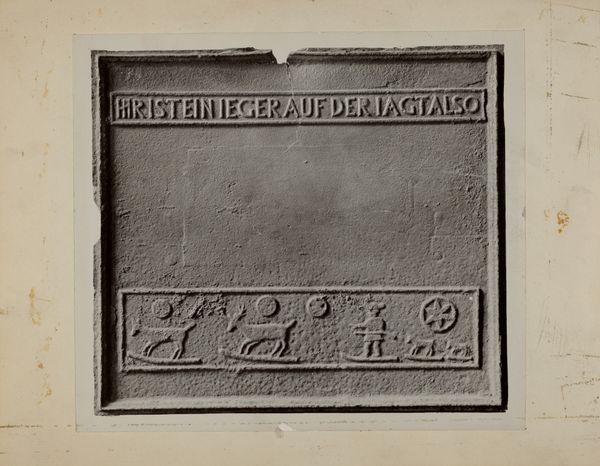
drawing, metal, sculpture
#
drawing
#
medieval
#
narrative-art
#
metal
#
figuration
#
sculpture
#
historical font
Dimensions: overall: 20.2 x 19.4 cm (7 15/16 x 7 5/8 in.) Original IAD Object: 23 1/4" wide; 21 1/2" high
Copyright: National Gallery of Art: CC0 1.0
Curator: So, here we have a photograph of a Pennsylvania German stove plate from around 1936. It's metalwork depicting a narrative scene. What strikes you most about it? Editor: I’m intrigued by how this functional object tells a story. The figures are quite stylized, almost medieval. What's your take on the significance of this historical style within this context? Curator: I think it's interesting to situate it within broader social histories of craft and identity. The 'medieval' style wasn't just aesthetic; it's tied to the German-American community intentionally invoking heritage, perhaps as a form of resistance or cultural preservation in a rapidly changing American landscape. Who does this imagery include, and who might it exclude? Editor: I see, so it's more than just nostalgia, but almost a statement. Who exactly is portrayed? It feels Biblical, but… Curator: It definitely evokes religious iconography, common in folk art traditions. Look at the inscription at the bottom – it references biblical figures and morals common for that time. It’s not only an expression of faith, but perhaps a projection of communal values. How might this object have functioned in the everyday lives of people, and how does that change our view? Editor: Right! This stove plate warmed a home and visually reinforced shared cultural identity. I now think about its role in shaping identity within family spaces… the stories it might have told, which is really compelling! Curator: Exactly. And by considering those narratives, we see that it also represents particular roles and perspectives within the community, making us wonder about those whose stories are absent. It is important to consider what voices may be overlooked. Editor: It gives a new perspective when you place this work within its history. Curator: Indeed. Art like this is never just about aesthetics; it's always speaking to social structures, cultural values, and historical moments. That's what makes art history so powerful.
Comments
No comments
Be the first to comment and join the conversation on the ultimate creative platform.
